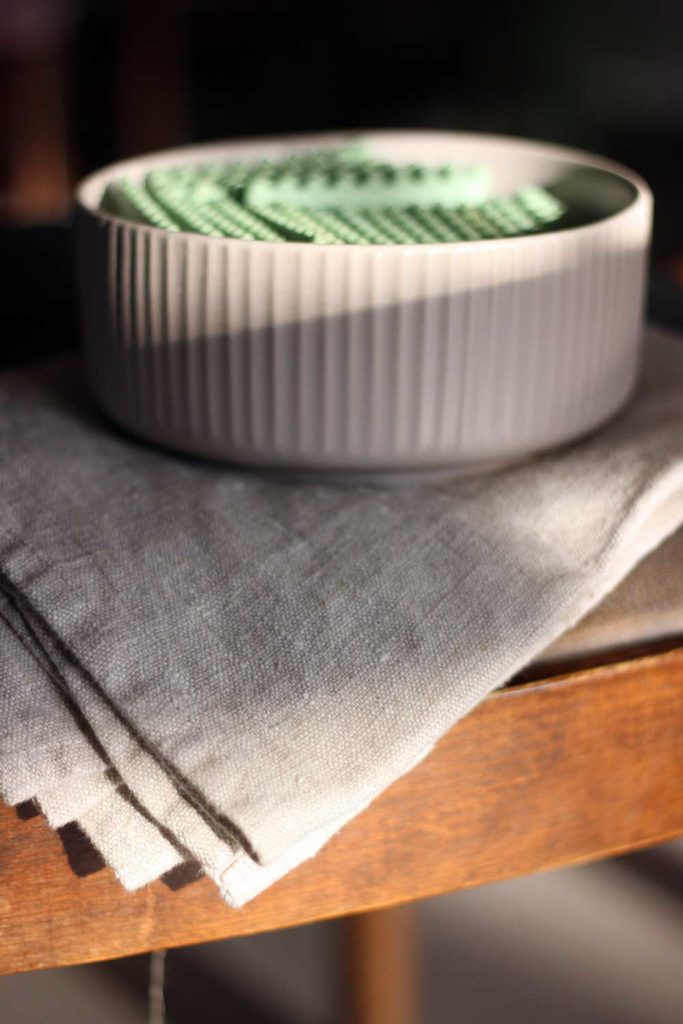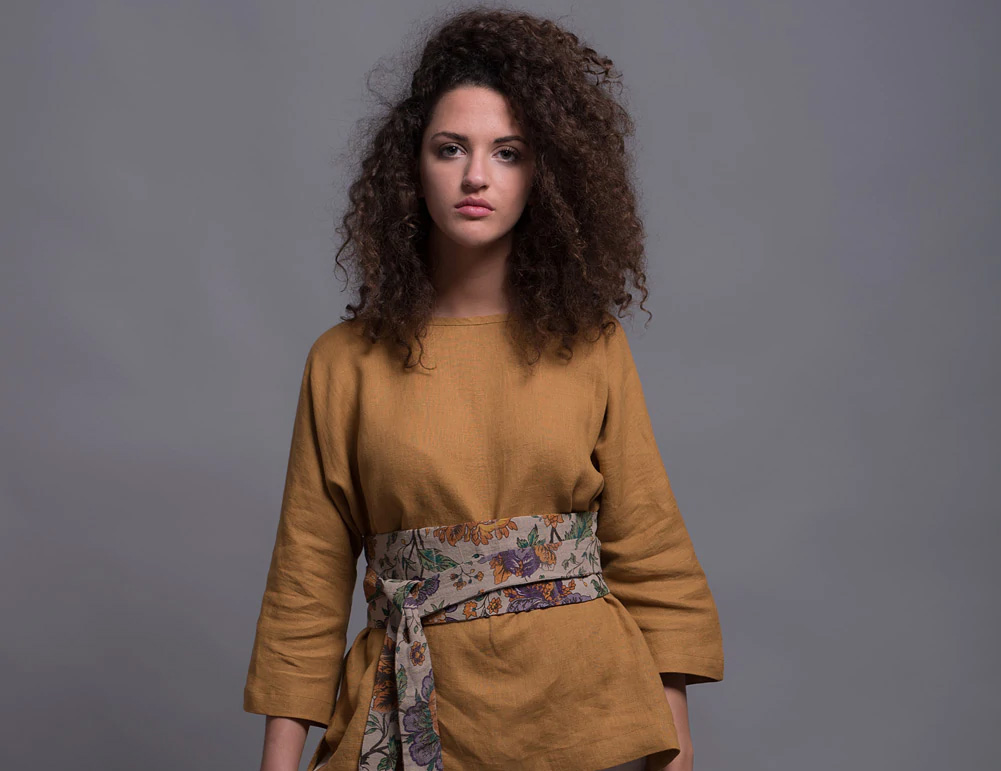Linen is a natural fabric that has been cherished for centuries for its exceptional qualities and timeless appeal. Derived from the fibers of the flax plant (Linum usitatissimum), linen is known for its breathability, comfort, and classic aesthetic. In the world of textiles, linen stands out as a versatile and enduring choice for clothing. Let’s explore what makes linen clothes so special.
Contents
What are linen clothes?
- Natural origins:
Linen has a rich history dating back thousands of years. The flax plant, from which linen is made, is one of the oldest cultivated plants in the world. The process of turning flax fibers into linen involves harvesting, retting, spinning, and weaving. This natural and ancient method contributes to the fabric’s unique texture and character. - Breathability and comfort:
One of the standout features of linen is its breathability. Linen fabric allows air to flow freely, making it an ideal choice for warm weather and hot climates. The loosely woven fibers create a light and airy feel, ensuring that the fabric remains cool against the skin. This breathability makes linen clothing a popular option for summer wardrobes, providing comfort even on the hottest days. - Classic aesthetic:
Linen clothes are celebrated for their timeless and effortlessly chic appearance. The fabric’s natural texture and slightly wrinkled look give linen garments a relaxed and casual vibe. Over time, linen softens and gains a beautiful patina, enhancing its visual appeal. Whether it’s a linen shirt, a linen dress, or linen pants, the fabric exudes a simple yet sophisticated charm. - Versatility:
Linen’s versatility extends beyond its comfort and aesthetics. It can be found in a variety of clothing items, ranging from everyday casual wear to more formal and elegant pieces. Linen’s ability to blend seamlessly into various styles and occasions makes it a favorite among fashion enthusiasts seeking both comfort and style. - Care and Maintenance:
While linen is renowned for its durability, it does require some special care. The fabric tends to wrinkle easily, but many people appreciate the relaxed, lived-in look that wrinkles give to linen garments. To maintain the fabric’s integrity, it’s advisable to hand wash or use the delicate cycle on the washing machine. Air-drying is recommended to prevent excessive shrinkage. - Sustainable Choice:
Linen is often considered an eco-friendly option in the fashion industry. Flax plants require minimal water and pesticides, making linen production relatively sustainable compared to some other textiles. Additionally, linen is biodegradable, reducing its environmental impact at the end of its life cycle.
Which is better linen or cotton?
When it comes to choosing fabrics for clothing, two natural fibers often stand out: linen and cotton. Let’s explore the features of linen and cotton to help you make an informed decision about which is better suited to your needs.

- Fiber Origins:
- Linen: Derived from the flax plant, linen is a natural fiber that has been used for thousands of years. Flax cultivation requires less water and pesticides compared to some other crops, making linen a more environmentally friendly option.
- Cotton: Cotton comes from the fluffy fibers that surround the seeds of the cotton plant. Cotton is one of the most widely used natural fibers in the world, known for its softness and versatility.
- Breathability:
- Linen: Renowned for its exceptional breathability, linen is a top choice for warm weather. The loosely woven fibers allow air circulation, keeping the body cool and comfortable. Linen’s moisture-wicking properties also make it absorbent, making it an excellent option for hot and humid climates.
- Cotton: Cotton is also breathable and comfortable to wear. It absorbs moisture well, making it suitable for various climates. However, compared to linen, it may feel slightly heavier and less airy.
- Comfort and Softness:
- Linen: While linen starts a bit stiff, it softens over time with each wash and wear. The fabric has a distinct textured feel, which many people find comfortable and enjoy for its relaxed look.
- Cotton: Cotton is known for its softness from the beginning, offering a smooth and comfortable feel against the skin. It is often chosen for its gentle touch and overall comfort.
- Durability:
- Linen: Linen is a durable fabric, but it can be more prone to abrasion and wear over time compared to cotton. Proper care, such as avoiding excessive wringing and using a gentle washing method, can help prolong its lifespan.
- Cotton: Cotton is known for its durability and can withstand regular wear and washing. It tends to hold up well over time, making it a reliable choice for various applications.
- Environmental Impact:
- Linen: Linen is often considered more environmentally friendly due to the lower water and pesticide requirements for flax cultivation. Additionally, linen is biodegradable, contributing to its eco-friendly profile.
- Cotton: While natural and biodegradable, conventional cotton farming can be resource-intensive, requiring significant water and pesticides. However, organic and sustainable cotton options are becoming more widely available, mitigating some of these concerns.
What is 100% linen?
In the world of textiles, few materials exude the timeless charm and natural elegance that 100% linen possesses. Let’s explore the characteristics that make 100% linen a beloved choice in the realm of fashion and home textiles.
Characteristics of 100% Linen:
- Breathability: 100% linen is celebrated for its exceptional breathability, making it an ideal choice for warm weather. The loosely woven fibers allow air to circulate freely, keeping the body cool and comfortable.
- Texture: The unique texture of linen is a result of the irregularities in the fiber structure. This gives linen its distinctively crisp and slightly rough feel, which softens over time with washing and wearing.
- Absorbency: Linen has excellent moisture-wicking properties, making it absorbent and quick-drying. This feature contributes to the fabric’s comfort, especially in humid conditions.
- Durability: 100% linen is known for its durability, although it can be prone to wrinkles. With proper care, including avoiding excessive wringing and opting for gentle washing methods, linen garments can stand the test of time.
In the realm of fabrics, 100% linen stands as a testament to the beauty of simplicity and natural authenticity. From its origins in the resilient flax plant to its versatile applications in clothing and home textiles, 100% linen continues to capture hearts with its timeless appeal. It remains a classic choice that seamlessly combines comfort and style.
Why is European linen the best?

When it comes to choosing linen, the origin of the fabric plays a pivotal role in determining its quality and characteristics. European linen has long been regarded as the gold standard in the world of textiles, renowned for its superior quality, sustainability, and craftsmanship. Let’s delve into the reasons why European linen is often considered the best, setting a standard that stands the test of time.
Climatic Advantage:
- Ideal Growing Conditions: European countries, particularly those in the northern regions, provide optimal climatic conditions for cultivating flax, the plant from which linen is derived. The moderate temperatures and rich soil create an environment where flax can flourish, yielding longer and finer fibers.
- Flax Varieties: European flax varieties are carefully selected and cultivated to produce fibers with specific qualities, such as length, strength, and fineness. This meticulous cultivation contributes to the overall excellence of European linen.
Tradition of Craftsmanship:
- Centuries of Expertise: European countries, notably Belgium, France, and the Netherlands, have a rich history of linen production dating back centuries. This long-standing tradition has been passed down through generations, resulting in a wealth of expertise and a deep understanding of the intricacies of linen production.
- Craftsmanship in Processing: The processing of flax into linen involves intricate steps, from harvesting and retting to spinning and weaving. European linen manufacturers adhere to time-honored methods, combining modern technology with traditional craftsmanship to ensure the highest quality at every stage.
Fiber Quality:
- Longer and Finer Fibers: European linen is known for its long and fine fibers, often referred to as “long line linen.” Longer fibers contribute to the strength and durability of the fabric, while finer fibers enhance the fabric’s softness and luxurious feel.
- Consistency: The meticulous cultivation and processing methods employed in European linen production result in a more consistent and uniform fabric. Consistency in fiber length and quality is a hallmark of premium linen textiles.
Softness and Comfort:
- Exceptional Softness: While linen is known for its slightly textured feel, European linen, with its finer fibers, tends to be exceptionally soft. This quality sets it apart, offering a luxurious touch that enhances comfort and wearability.
- Breathability: European linen retains the inherent breathability of the fabric. The loosely woven fibers allow air to circulate freely, providing comfort, especially in warmer climates.
Sustainability and Eco-Friendliness:
- Responsible Cultivation: European linen manufacturers often prioritize sustainable and environmentally friendly practices. Flax cultivation in Europe typically involves fewer pesticides and synthetic fertilizers compared to some other regions, making European linen a greener choice.
- Traceability and Transparency: European linen producers often adhere to high standards of traceability and transparency in their supply chains. This commitment allows consumers to make informed choices and supports ethical and eco-conscious consumption.
Certifications and Standards:
- Certifications: European linen manufacturers often adhere to stringent certifications and standards related to quality, environmental impact, and social responsibility. Certifications such as Masters of Linen and Oeko-Tex ensure that the linen meets certain criteria for excellence and sustainability.
Conclusion:
We would like to remind you that the Shantima fabric supplier company is a member of the European Flax-Linen and Hemp Alliance and therefore all fabrics that we use are certificated with European flax. All fabrics we use for sewing Shantima’s clothing are certified according to OEKO-TEX ® Standard 100
In conclusion, we want to say that linen clothes offer a combination of comfort, style, and sustainability. Whether you’re looking for a breezy summer wardrobe or a timeless addition to your closet, linen is a fabric that has stood the test of time and continues to be a beloved choice for discerning fashion enthusiasts.
